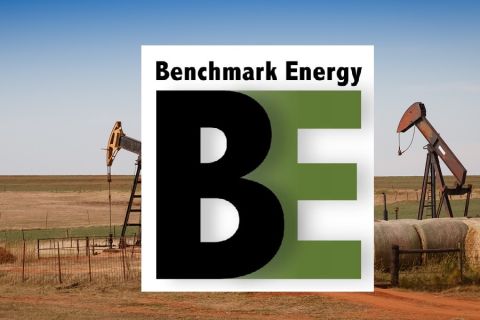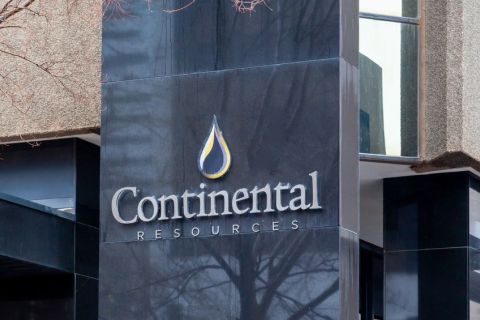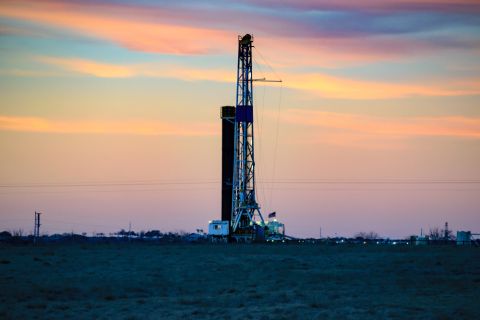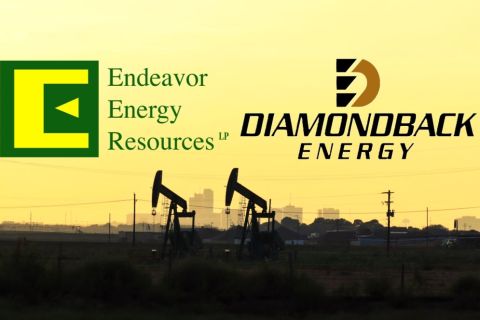Walk through the aisles of the semi-annual NAPE Expo in Houston and scattered among the table-top displays of landmen pitching their prospects are giant exhibits by major independents like Anadarko Petroleum, Chesapeake Energy, Apache Corp.—and Mullins & White.
The lattermost’s booth is large, but the company isn’t. Mullins & White Exploration Inc. chairman and president Rick Mullins reveals, “We’re just a small North Texas company. Small fries.”
The booth, second in size only to Chesapeake’s, was purchased at a fire sale, and it’s ignited a lot of good attention at the prospect show that is hosted by the American Association of Professional Landmen and has grown in its 15 years to host some 15,000 industry prospect-buyers and decision-makers.
Mullins & White is an example of a small independent that has upsized through partnerships with major players, propelling its hesitant upstart 11 years ago into pieces of deals it’s brokered in 17 states, primarily on the Gulf Coast. The company has been aided by several critical deals that bloomed from NAPE.
“It’s a huge networking opportunity,” Mullins says of NAPE. “If you squander it away by trying to remain anonymous, that’s foolish. We have name recognition now. I think it’s solely because of the presence we have there. How else can you go about trying to make your name known so you can get in and have meetings with the bigger companies that you want to partner with? There’s truly no other venue.”
Mullins & White was formed in July 1996 when Martin White approached his cousin Mullins about starting the Southlake, Texas-based E&P company. White had been an oil and gas assetbroker with McCullough Eberhart Investment Corp., marketing properties in the Austin Chalk, but was not affiliated with anyone at the time.
Mullins had a background as an MBA, CPA and lawyer, all with energy ties but with no direct E&P experience. He was persuaded by White, but didn’t quit his day job as a technical editor for a legal and regulatory publisher until 2000. The upstart targeted small positions in East and West Texas.
“We were doing shallow little deals,” says Mullins. “I wanted to focus in Texas because I know Texas oil and gas law. I didn’t think I could get hurt.”
A few months later they attended their first NAPE, trolling the floor, scouring for opportunities. They stopped at every booth, a feat he confesses might be impossible now. And while they did not seal a deal at the show, as is typical of initial contacts borne from NAPE, they made a connection that would propel the company to the next level.
“We met somebody who knew somebody who gave us a call to introduce us to somebody else,” Mullins says. “We sat down and talked with a friend that we had made. When we left, he called somebody else who had a deal that we looked at and ended up making a deal. It wasn’t one that was actually shown at NAPE, but this was a classic example of where networking paid dividends.”
The deal was for 2,300 acres in Throckmorton and Young counties in north-central Texas in which the pair paid $50 an acre—just “old Mississippian stuff” in the Fort Worth Basin, he says. The plan was to shoot 3-D seismic targeting the top of the structure and find old “attic” reserves that had been missed by 2- D seismic over the life of the 70-year-old field.
“Back then 4,000 to 6,000 feet was the deepest I would go because anything deeper scared the hell out of me. How times have changed. We were trying to get oil and gas, so we weren’t trying to focus on one side or the other. It worked out.”
Instead, they found reserves in the shallower Strawn formation and set out to drill. With an 87.5% working interest after having only kept small positions previously, and funding the operation out of cash on hand, the company was taking a big risk.
The first well was a dud. The second proved mildly successful. Then the third came on at 60 to 70 barrels of oil per day. “That was a million-dollar well,” says Mullins. “That got the cash flow going.”
The company went on to drill 10 wells at $6 a foot into the Strawn and deeper Marble Falls and Mississippian formations. The deal took the company to a new level. “Just those few wells with some success at the right time launched us,” he says.
The next level The pair established a business plan that involved putting together acreage blocks and finding an experienced industry partner to drill it. Mullins & White would retain a working interest, largely determined by the cost of drilling the wells.
“I have a personal limit on how much I like to put into a single well,” Mullins says. “It’s generally less than $1 million. When it gets to be more than that, I start to question myself. The cost of the well and how much risk I’m willing to accept essentially drives how much working interest I’m going to retain.”
Mullins acknowledges there is one well in Louisiana in which he has more than $5 million invested. “That well really worries me,” he says. “When you’re a small company like us, something over $1 million, and especially when you approach that $5-million mark, that’s just too much. I have regrets about that. There are just too many risks involved.”
The partners continued working the floor of NAPE through the years and in the late 1990s made a relationship that would forever alter the fortune of the company.
“We met this guy there from Yates, New Mexico, and our name ended up out in Midland. We talked to the fellow in Midland, but didn’t really like what he had. The fellow in Midland referred us to a company in Austin that had some acreage they were working on with Anadarko. Lo and behold, that long string of phone calls—all from a half-hour discussion at one of those little circular tables at NAPE—got us into our Austin Chalk wells in Tyler County.”
Mullins & White bought a 5% interest in a 34,000-acre play and Anadarko began drilling in 2003. Through 13,000 feet of “deep, nasty” Austin Chalk with 8,000 feet of laterals, the wells exceeded Mullins’ shallow-well comfort zone.
“Here we are now, drilling these monsters that are overpressured. They have 6,000 to 7,000 pounds of pressure on them and it’s just a whole different animal. It’s a good thing I got over my trepidation about going deeper because it certainly has made all the difference for us.”
The wells were huge, coming in at 20- to 30 million cubic feet of gas and 4,000 to 5,000 barrels of oil per day. And although they have a hyperbolic decline curve like all Austin Chalk wells, the numbers were breathtaking. One well paid out in 19 days and is still steadily producing. Mullins & White currently has a part in more than 20 wells in this field with total net production of 430,000 barrels equivalent.
“That field is beautiful,” says Mullins.
“Through that one conversation we had at NAPE, it went from some guy in Midland, to Austin, and then—boom—we’re in a deal. I don’t think there was any other way we would have found that guy (except through NAPE). We didn’t have any contacts in the Austin Chalk during the leasing of it at that time, and that was long before we had a land department like we have now to do the leasing.
“We were just two guys contracting all of our technical expertise, and it catapulted us into a whole different league. It changed the way we did business.”
Before the Tyler County deals the company routinely took partners, and did also with the first couple of wells drilled with Anadarko. Now, “we keep everything, even though the AFEs (authorizations for expenditure) are anywhere from $10- to $12 million per well.”
The big booth When the company decided to have a booth at NAPE in 2005, it debuted with a 20- by 30-foot presence, already one of the biggest exhibitors at the show. Following that show, Mullins’ wife, Theresa, shopped the Internet and found a $250,000-booth being sold by a defunct telecom company. She picked it up for $11,000. It was a behemoth.
The partners pared the giant booth to the 20-by-30-foot space, still proportionally far larger than any other NAPE exhibitor of its size. Mullins was concerned about how it would be received.
The bold debut created curiosity and proved to be a marketing phenomenon. His concern about being a laughingstock faded when he realized the importance of taking advantage of that chance to get the Mullins & White name in front of people.
“After I got through my embarrassment, we went whole hog and have made NAPE one of our focuses for building relationships. It has helped us get deals done where we may have missed opportunities otherwise.”
“We try to make an industry presence so that, when we want to lease up 5,000 or 6,000 acres, we can get in front of somebody and show the deal. That’s what NAPE has helped us do. It has really worked out well for us.”
In December, the company closed an East Texas deal it presented at Summer NAPE in August. A large, private independent bought an 80% position in acreage covering Nacogdoches, Shelby and San Augustine counties, leaving Mullins & White with 18,000 gross acres, which they have sold down to 3,700 net. They plan a drilling program for the Travis Peak and in the horizontal James lime. Mullins says other operators have hit some really good wells recently in Shelby County in the horizontal lime.
Present value Today Mullins & White has 49 employees and owns working interests from less than 1% to 87.5% in net proven reserves totaling about 100 million barrels of oil equivalent.
“We’re continuing to grow into many different plays,” Mullins says. While the company owns positions in 17 states, most are small, mostly bought for cash flow over many years. A map of assets would “make us look pretty huge,” he says. “You would think we were as big as Anadarko.”
The company primarily focuses in Texas and Louisiana, which accounts for about 90% of assets, although Mullins is eagerly waiting for additional wells to be drilled in a Utah prospect. Most of the company’s cash flow comes from East Texas properties in Tyler and Freestone counties, and from properties in Avoyelles, Evangeline and Rapides parishes, Louisiana.
Expect to find Mullins at NAPE with at least one prospect for sale in his great big booth. His NAPE strategy involves putting together one or more acreage positions prior to the show and using the show to find that perfect operating partner.
“Since we’re trying to partner up with a reputable company to operate, we probably will do more selling than we do buying at NAPE. We’ll buy acreage on our own out in the field now more than buying it at NAPE,” he says. “But as sure as I say that, we’ll go there and find somebody looking for a partner exactly in the area that we want to be.
“That’s one of the beauties of NAPE,” he says. “You almost never know what you’re going to find.”
Recommended Reading
Benchmark Buys Revolution Resources’ Anadarko Assets in $145MM Deal
2024-02-20 - Benchmark Energy II is acquiring Revolution Resources just over four years after Revolution bought out Jones Energy Inc.’s Midcontinent portfolio.
Continental Resources Makes $1B in M&A Moves—But Where?
2024-02-26 - Continental Resources added acreage in Oklahoma’s Anadarko Basin, but precisely where else it bought and sold is a little more complicated.
Permian Resources Continues Buying Spree in New Mexico
2024-01-30 - Permian Resources acquired two properties in New Mexico for approximately $175 million.
Marketed: Navigation Powder River Eight Leasehold Lots in Wyoming
2024-04-09 - Navigation Powder River has retained EnergyNet for the sale of eight non-producing federal leasehold lots in Converse and Campbell counties, Wyoming.
Analysts: Diamondback-Endeavor Deal Creates New Permian Super Independent
2024-02-12 - The tie-up between Diamondback Energy and Endeavor Energy—two of the Permian’s top oil producers—is expected to create a new “super-independent” E&P with a market value north of $50 billion.




